Proteins Can Inherit Memories Beyond DNA
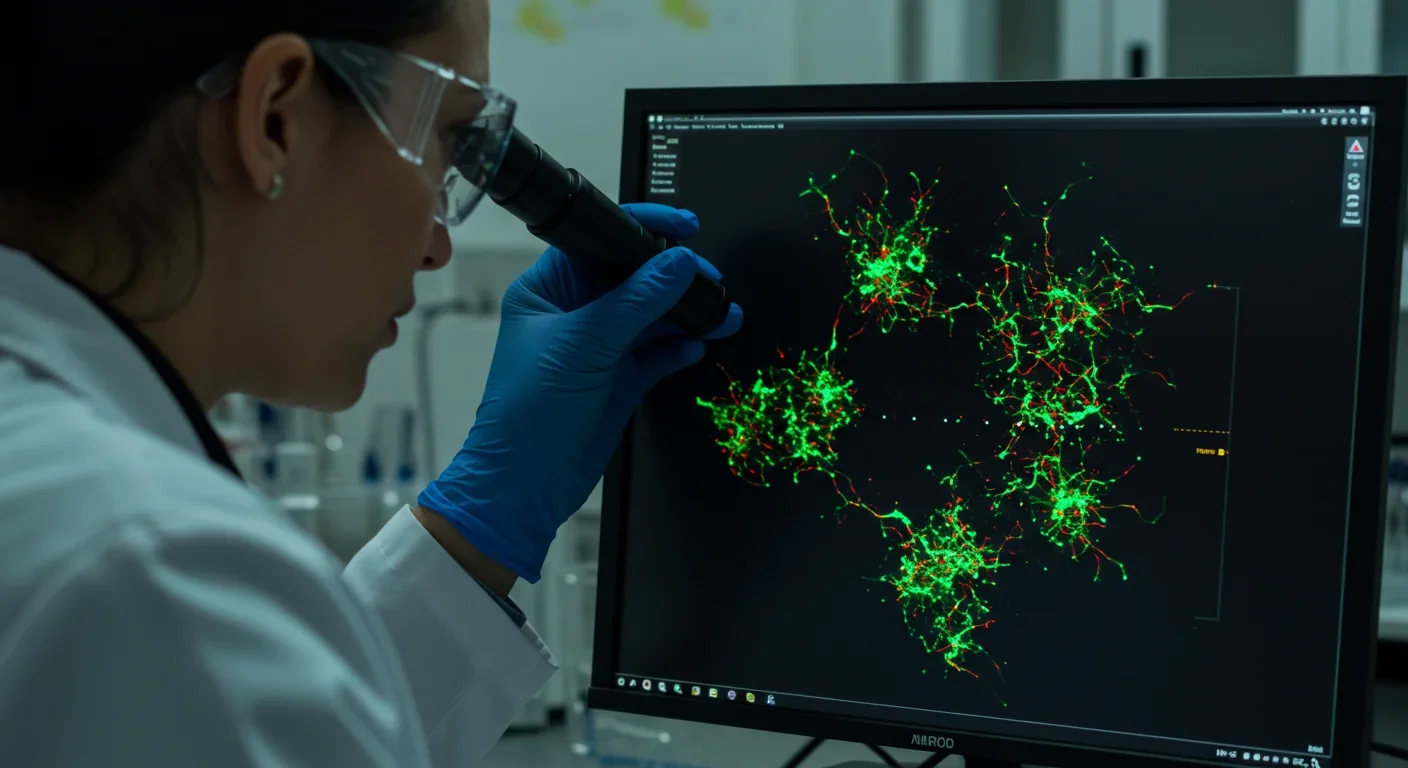
TL;DR: Crows and other corvids bring gifts to humans who feed them, revealing sophisticated social intelligence comparable to primates. This reciprocal exchange behavior demonstrates theory of mind, facial recognition, and long-term memory.
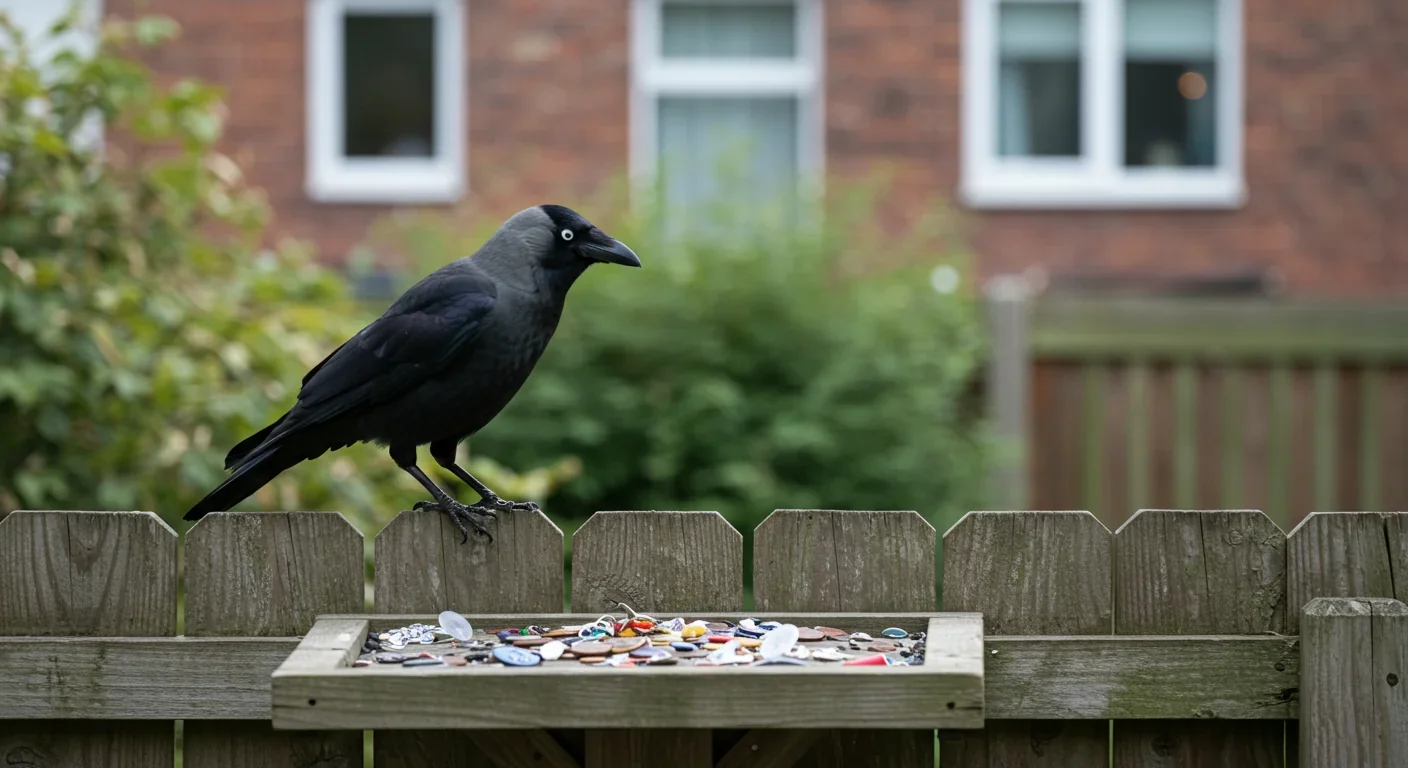
An eight-year-old girl in Seattle fed crows in her backyard. The birds started leaving her gifts. Over time, they brought more than 100 objects: earrings, buttons, LEGO pieces, polished stones, scraps of metal, even a pearl-colored heart. The crows remembered her. They returned, waited for acknowledgment, then flew off.
This isn't folklore or internet mythology. It's documented behavior that reveals something startling about the minds of birds. Corvids—the family that includes crows, ravens, magpies, and jays—don't just recognize human faces and remember favors. They engage in what appears to be reciprocal exchange, a sophisticated social behavior scientists once thought was limited to primates.
The question isn't whether this happens. It's what it means. When a crow brings you a shiny bottle cap, is it thanking you? Does it understand what a gift is? Or are we projecting human intentions onto bird behavior?
Recent research suggests the truth is more fascinating than either explanation.
For decades, "bird brain" was an insult. The assumption was simple: small brain equals limited cognition. But neuroscientists discovered that corvid brains operate on different principles than mammalian ones. Bird neurons are smaller and packed more densely. Ounce for ounce, corvids have significantly more neurons in their pallium—the brain region that handles higher cognition—than mammals of similar size.
A macaw has more forebrain neurons than a macaque. Ravens perform as well as chimpanzees on tests of inhibitory control, which measures the ability to resist impulses and make strategic decisions. When researchers used the cylinder test, where animals must reach around a transparent barrier instead of trying to grab through it, ravens chose the correct entry point in every trial. That's a success rate matching bonobos and gorillas.
The nidopallium caudolaterale, a cluster of neurons in the corvid brain, functions similarly to the mammalian prefrontal cortex. It supports rule learning, memory integration, and strategic planning. When crows performed memory tasks that required switching between different rules, researchers could predict which rule the bird would follow based on neural activity before the crow even acted. The birds weren't just reacting. They were planning.
This neurological architecture enables what behavioral scientists call theory of mind—the ability to understand that other individuals have their own thoughts, intentions, and perspectives.
California scrub-jays cache food for later consumption. If another bird watches them hide food, they'll return later and move it to a new location. They only do this if they themselves have stolen food from others before. The birds seem to project their own thieving experience onto potential observers, anticipating that what they've done, others might do too.
Ravens take extra precautions when hiding food if they think another bird is watching. Sometimes they perform fake caching—pretending to hide food in one spot while actually concealing it elsewhere. This requires understanding not just that another bird is present, but what that bird can see and what it might be thinking.
Urban crows in Bangalore, India, participating in the Cawgnition Project, consistently chose their preferred food rewards even when easier options were available. They showed persistence, discernment, and goal-directed behavior. They adapted to novel food sources and remembered which feeding stations provided the best returns.
These aren't simple stimulus-response patterns. They're complex cognitive processes involving memory, prediction, and social awareness.
The University of Washington conducted a now-famous experiment on facial recognition. Researchers wearing specific masks captured and banded crows. Years later, those same crows—and crows that hadn't been captured but had witnessed the capture—would scold and dive-bomb anyone wearing those masks. They ignored people wearing different masks. The behavior persisted for at least 17 years. Crows didn't just remember individual humans. They communicated threat information to other crows who hadn't experienced the threat firsthand.
If crows can recognize faces, remember who helped or harmed them, and understand that others have knowledge they can share, then reciprocal exchange becomes cognitively possible.
Gabi Mann's story went viral, but she's not alone. Online forums and social media platforms contain hundreds of reports from people who fed crows and later found small objects left in feeding areas. Coins. Keys. Buttons. Bits of glass. Metal screws. Sometimes food items like nuts or berries.
John Marzluff, a crow behavior researcher at the University of Washington, calls this reciprocal altruism. Crows remember who helps them and may respond in kind. The behavior isn't random. Crows often return to the same person. They sometimes wait for acknowledgment before leaving.
What types of objects do they choose? The "crows love shiny things" trope turns out to be partly myth. Controlled experiments show corvids don't universally prefer shiny objects. But they do show interest in novel items, particularly small, portable objects that stand out from their environment. The gifts people receive often include both shiny and non-shiny items: plastic toys, natural stones, bits of colored glass, fabric scraps, even wilted flowers.
The selection process might reflect several cognitive factors. Corvids have excellent visual perception and a well-developed sense of smell. They notice objects that are unusual or distinctive. They're also tool users, which means they understand object affordances—what objects can do and how they can be manipulated.
New Caledonian crows in laboratory settings drop stones into water-filled tubes to raise the water level and reach floating food. They choose sinking objects over floating ones, prefer solid to hollow materials, and target tubes with higher water levels. This demonstrates causal reasoning and an understanding of physical properties.
When urban crows drop walnuts on pavement to crack them, they adjust drop height based on nut hardness. Harder black walnuts get dropped from higher than softer English walnuts. They choose pavement over soil to reduce theft risk from other animals. Every action reflects sophisticated decision-making.
If corvids understand object properties and can assess value, then selecting gifts isn't random collection. It's deliberate curation.
Reciprocal altruism is behavior where one individual helps another with the expectation that the favor will be returned. Robert Trivers introduced the concept in 1971 to explain cooperation between unrelated individuals. For this strategy to evolve, certain conditions must exist. Individuals must interact repeatedly. They must be able to recognize each other. They must remember past interactions. And they must have the cognitive capacity to adjust behavior based on whether others reciprocate.
Corvids meet all these conditions. They have long lifespans, often living 10-20 years in the wild. They form stable social groups with complex hierarchies. They recognize individuals across species—including humans. And they possess the memory and strategic thinking required to track social debts.
In iterated games like the Prisoner's Dilemma, strategies like tit-for-tat promote cooperation. You cooperate on the first move, then copy what your partner did on the previous move. This strategy is evolutionarily stable when interactions are frequent and partners are reasonably faithful.
Human-corvid relationships in urban environments create exactly these conditions. A person feeds crows regularly in the same location. The crows learn the routine, recognize the individual, and return predictably. The interaction becomes iterated. From the crow's perspective, bringing an object might signal continued cooperation—a token that says "I remember you helped me, and I'm invested in this relationship continuing."
The evolutionary advantage is clear. Corvids that successfully navigate human-altered environments gain access to abundant food resources. Urban environments provide more calories per unit area than most wild habitats. Crows that learn to cooperate with specific humans create private food sources protected by social bonds.
Studies on human food sharing show that reciprocal models stabilize when individuals interact frequently and maintain reasonably faithful partnerships. The same logic applies to corvid-human interactions. The crow doesn't need to understand human economics or the concept of gift-giving as humans understand it. It only needs to recognize patterns: food appears when I interact with this person, positive outcomes follow when I bring objects, and this person continues to provide resources.
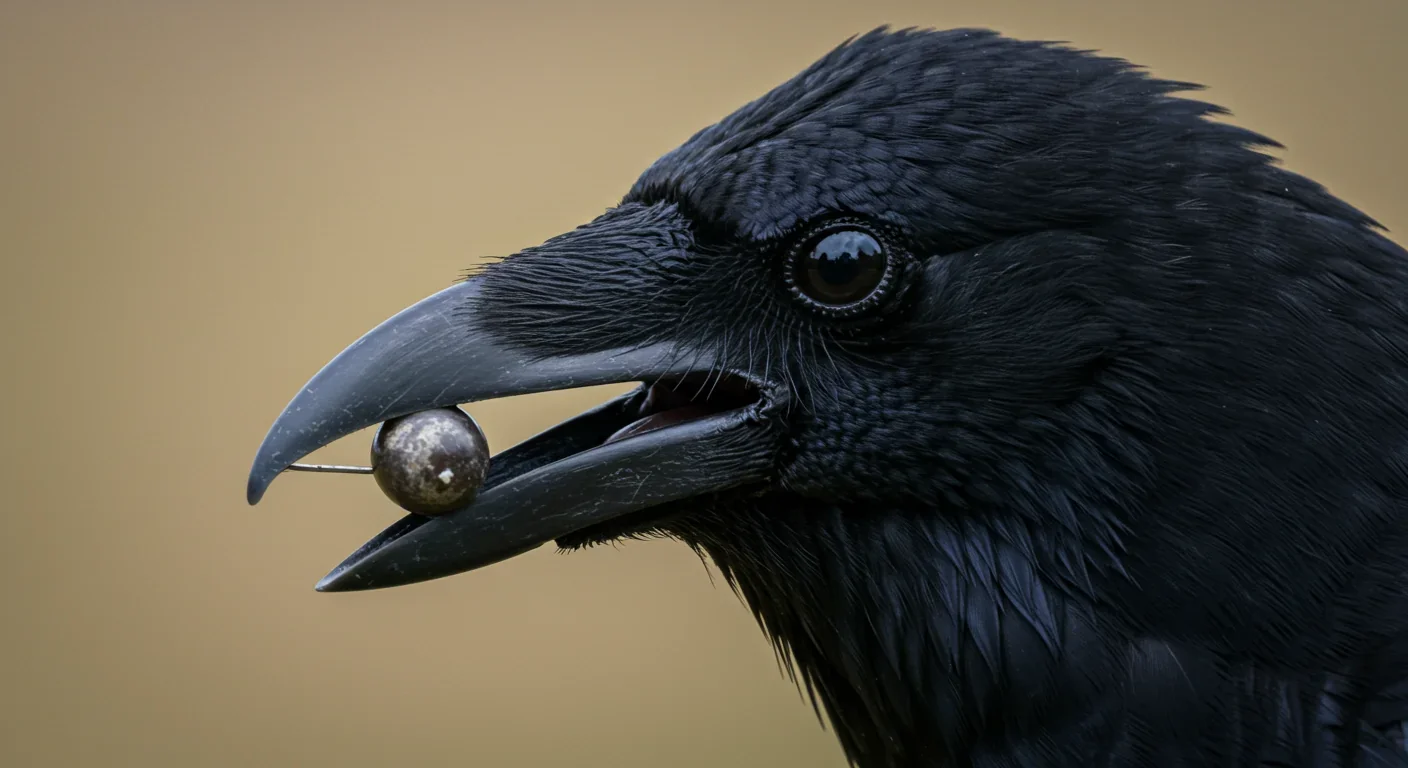
For years, social intelligence was considered a primate specialty. Chimpanzees form alliances, remember social debts, and engage in political maneuvering. But corvid cognition rivals primate intelligence in multiple domains. Problem-solving, planning for the future, and social awareness all show comparable sophistication.
Researchers studying five dimensions of consciousness found that corvids exhibit sensory richness, evaluative richness, synchronic unity, diachronic unity, and self-awareness. They experience emotional states including pleasure, pain, curiosity, fear, and boredom. They show high emotional complexity and appear influenced by the moods of others.
Some corvids show success on mirror self-recognition tasks, though results vary by species. This suggests at least some capacity for self-awareness, a trait once thought exclusive to great apes, dolphins, and elephants.
The differences between corvid and primate cognition are as interesting as the similarities. Primates evolved large brains to navigate complex social hierarchies in stable groups. Corvids evolved dense neural architecture to solve ecological problems while maintaining flexible social networks. Both paths led to advanced cognition, but through different evolutionary pressures.
Primates have hands. They manipulate objects constantly and develop fine motor skills. Corvids use beaks and feet, requiring different cognitive strategies for tool use. Yet both groups innovate, teach skills to offspring, and transmit cultural knowledge across generations.
Where primates excel at close-range social coordination within stable groups, corvids excel at spatial memory, innovation, and cross-species social learning. Urban crows learn restaurant opening hours, traffic patterns, and which individual humans are safe. They exploit human-created opportunities with remarkable speed.
The convergent evolution of intelligence in corvids and primates suggests that advanced cognition arises independently when ecological and social pressures favor it. You don't need a massive brain. You need the right cognitive tools for your environment.
For centuries, Western philosophy treated animal minds as fundamentally different from human minds. Descartes argued animals were biological automatons, incapable of genuine thought or feeling. Darwin challenged this view, arguing that mental traits evolved gradually and exist on a continuum across species.
Modern neuroscience supports Darwin's view. Consciousness isn't binary. It exists in degrees across multiple dimensions. Corvids possess rich perceptual experiences, emotional complexity, episodic memory, and self-referential processing. They anticipate future needs and modify behavior based on past experiences.
When a crow brings a gift, what subjective experience accompanies that behavior? We can't access crow phenomenology directly. But we can make informed inferences based on behavior and neurobiology.
The crow recognizes you as an individual. It remembers your interactions. It experiences positive associations with your presence, likely mediated by dopaminergic reward systems similar to those in mammals. It understands cause and effect well enough to connect food availability with your behavior. It selects an object, carries it, and places it where you'll find it.
Each step requires intentionality. The crow could fly away with the object. It could drop it anywhere. Instead, it delivers it to a specific location associated with you. That's not automatic stimulus-response. It's goal-directed action based on mental representation.
Does the crow feel gratitude? That's harder to answer. Gratitude as humans experience it involves complex emotions, social norms, and cultural context. But the neural systems that generate gratitude in humans—reward processing, social bonding, positive reinforcement—exist in corvids too. The subjective experience likely differs, but the functional mechanisms overlap.
Philosopher Walter Veit argues that corvids possess sophisticated, self-referential, and social cognition comparable to primates. The evidence increasingly supports consciousness as a widespread phenomenon, not a human monopoly or even a mammalian one.
Understanding corvid cognition has practical applications. Urban planners and wildlife managers need to account for bird intelligence when designing interventions. Crows remember negative interactions for decades and communicate threats to others. Culling programs often backfire because surviving crows learn to avoid humans and teach avoidance behaviors to offspring.
Conversely, positive interactions create opportunities for coexistence. Cities like Tokyo and Seattle have seen corvid populations stabilize as residents learn to manage food waste properly and avoid antagonizing birds. Mutual tolerance requires recognizing that corvids are strategic agents, not nuisances to be eliminated.
Research applications extend beyond urban wildlife management. Corvid cognition serves as a model for understanding convergent evolution of intelligence. Studying how small, dense brains achieve primate-level cognition could inform artificial intelligence design. Biological neural networks don't scale linearly with size. Efficiency comes from architecture, not mass.
Comparative cognition research also challenges assumptions about which species deserve moral consideration. If corvids possess theory of mind, episodic memory, and emotional complexity, should that influence how we treat them? Legal frameworks in some jurisdictions already recognize certain animals as sentient beings with protected status. Corvids might warrant inclusion.
Future research needs to address several open questions. Do all corvid species show gift-giving behavior, or is it limited to specific populations? What role does cultural transmission play? Do young crows learn gift-giving by observing adults, or is it an independent innovation?
Neurobiological studies could map the precise circuits involved in reciprocal behavior. Comparative studies could examine whether corvids show gift-giving within their own species, not just with humans. Long-term field observations could track how human-corvid relationships evolve over years or decades.
Most importantly, we need better methods for assessing subjective experience in non-human minds. Behavioral and neurological evidence provides strong indirect evidence of consciousness, but accessing phenomenology remains philosophy's hard problem. Advances in neural imaging, computational modeling, and comparative psychology might gradually narrow this explanatory gap.
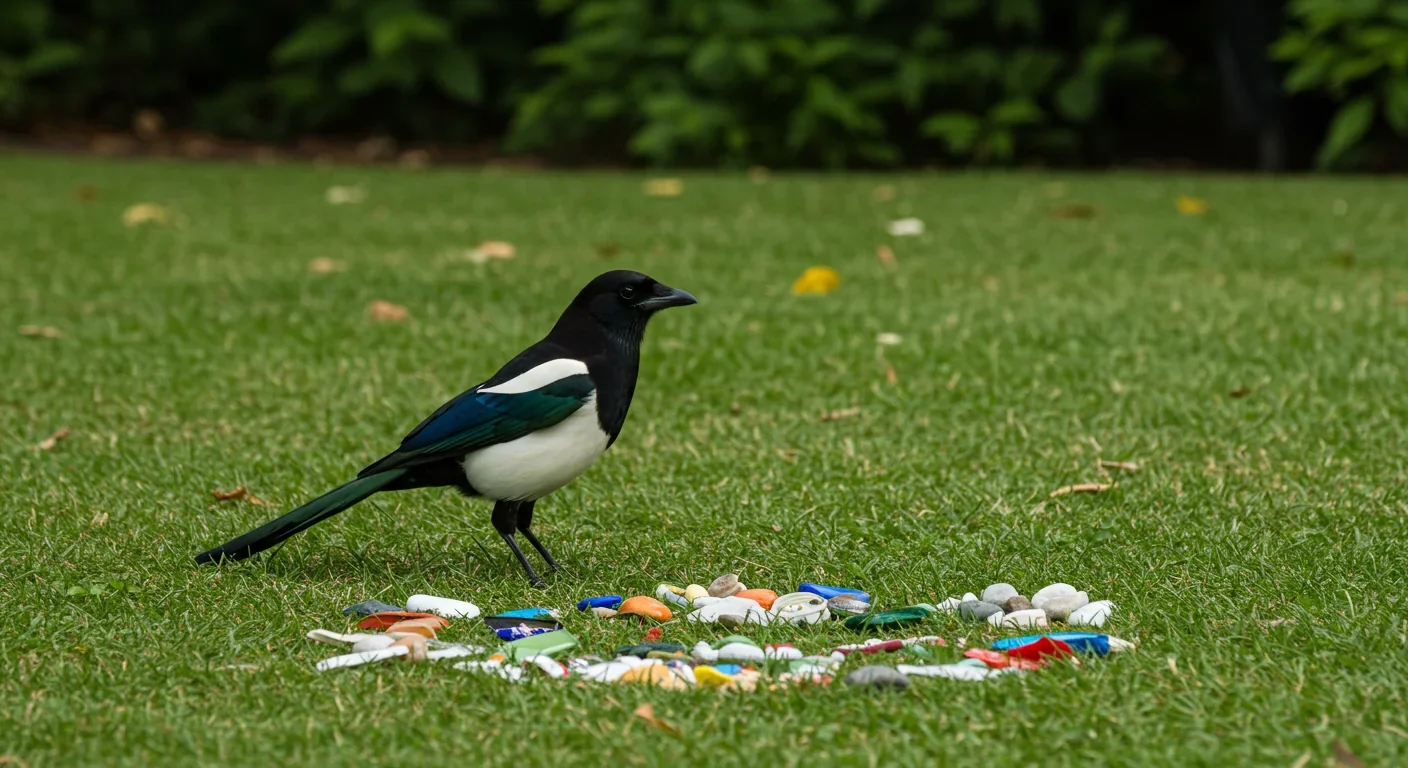
The real story here isn't just about clever birds. It's about the distribution of mind in nature. For too long, humans assumed intelligence was our defining trait, with perhaps a few primate cousins showing pale imitations.
The corvid research shatters that assumption. Intelligence evolved multiple times, through different paths, in different lineages. Octopuses, with their distributed nervous systems, show remarkable problem-solving and learning. Elephants demonstrate self-awareness and cultural transmission. Dolphins have complex communication systems and social structures.
Each lineage evolved cognitive tools suited to their ecological niche. Corvids needed spatial memory to track thousands of food caches across changing seasons. They needed social intelligence to navigate dominance hierarchies and cooperative breeding. They needed innovation to exploit new food sources and adapt to changing environments.
The result is a mind unlike ours but equally sophisticated in its domain. When a crow recognizes your face, it's using computational processes that rival facial recognition AI. When it remembers you helped it three years ago, it's accessing episodic memory comparable to human autobiographical recall. When it brings you a gift, it's engaging in social exchange that requires theory of mind.
These aren't party tricks. They're glimpses into alien consciousness—not from other planets, but from other branches of the evolutionary tree. Every interaction with a crow is a cross-species communication experiment, bridging cognitive architectures separated by 300 million years of evolutionary history.
We share cities with minds that recognize us as individuals, remember our kindness, and try to reciprocate in the only currency they have. That's not just fascinating science. It's an invitation to rethink our relationship with the non-human world.
Next time a crow watches you from a fence, remember: it's watching you the same way you're watching it. And it might remember this moment longer than you do.

Fast Radio Bursts—millisecond flashes from distant galaxies releasing more energy than the Sun in days—have evolved from cosmic oddities into powerful tools. Advanced telescopes like CHIME now detect dozens weekly, tracing origins to specific galaxies and even individual stars. Magnetars, ultra-magnetized neutron stars, are confirmed sources, yet mysteries abound: repeaters in dead galaxies, second-scale periodicities, and absence of X-ray counterparts. FRBs now map invisible baryons, measure...

Scientists are revolutionizing gut health by identifying 'keystone' bacteria—crucial microbes that hold entire microbial ecosystems together. By engineering and reintroducing these missing bacterial linchpins, researchers can transform dysfunctional microbiomes into healthy ones, opening new treatments for diseases from IBS to depression.
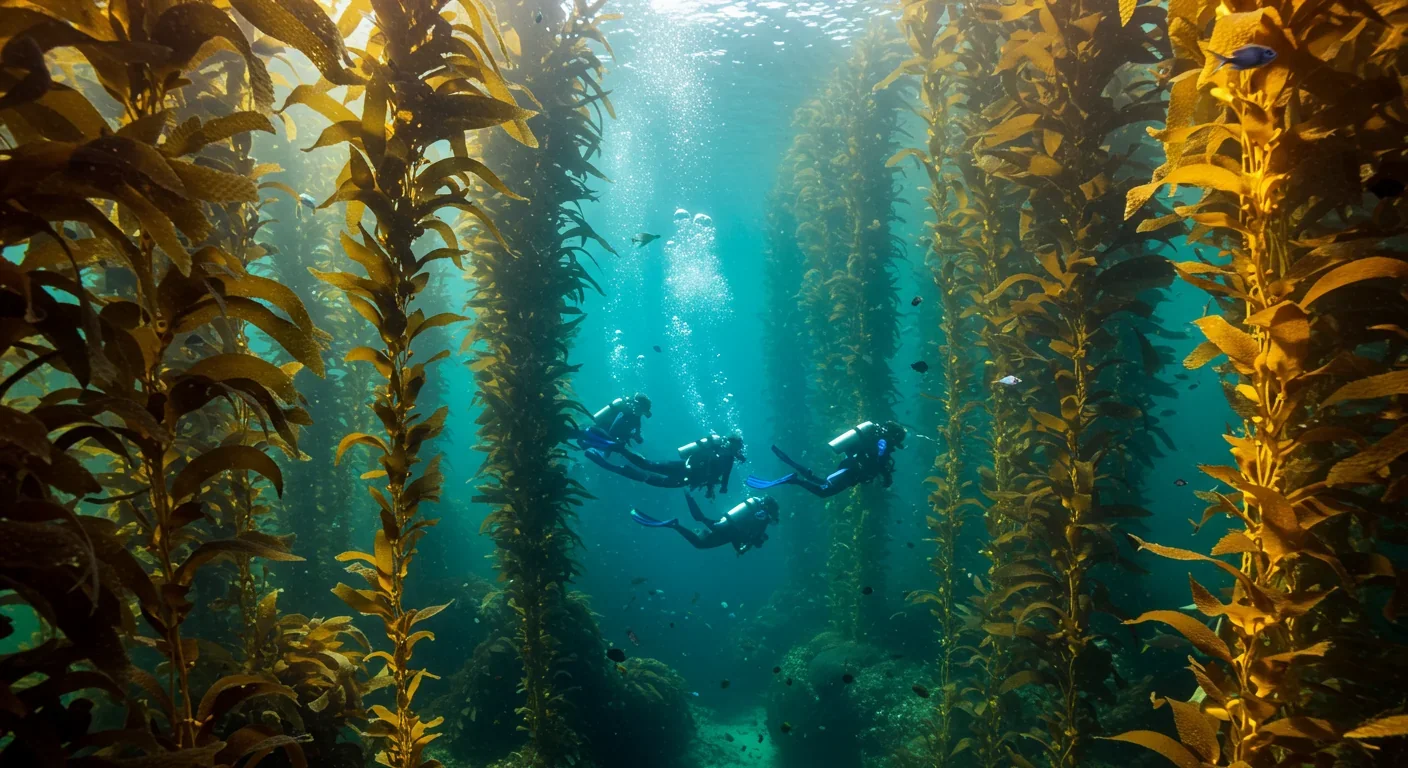
Marine permaculture—cultivating kelp forests using wave-powered pumps and floating platforms—could sequester carbon 20 times faster than terrestrial forests while creating millions of jobs, feeding coastal communities, and restoring ocean ecosystems. Despite kelp's $500 billion in annual ecosystem services, fewer than 2% of global kelp forests have high-level protection, and over half have vanished in 50 years. Real-world projects in Japan, Chile, the U.S., and Europe demonstrate economic via...

Our attraction to impractical partners stems from evolutionary signals, attachment patterns formed in childhood, and modern status pressures. Understanding these forces helps us make conscious choices aligned with long-term happiness rather than hardwired instincts.

Crows and other corvids bring gifts to humans who feed them, revealing sophisticated social intelligence comparable to primates. This reciprocal exchange behavior demonstrates theory of mind, facial recognition, and long-term memory.

Cryptocurrency has become a revolutionary tool empowering dissidents in authoritarian states to bypass financial surveillance and asset freezes, while simultaneously enabling sanctioned regimes to evade international pressure through parallel financial systems.
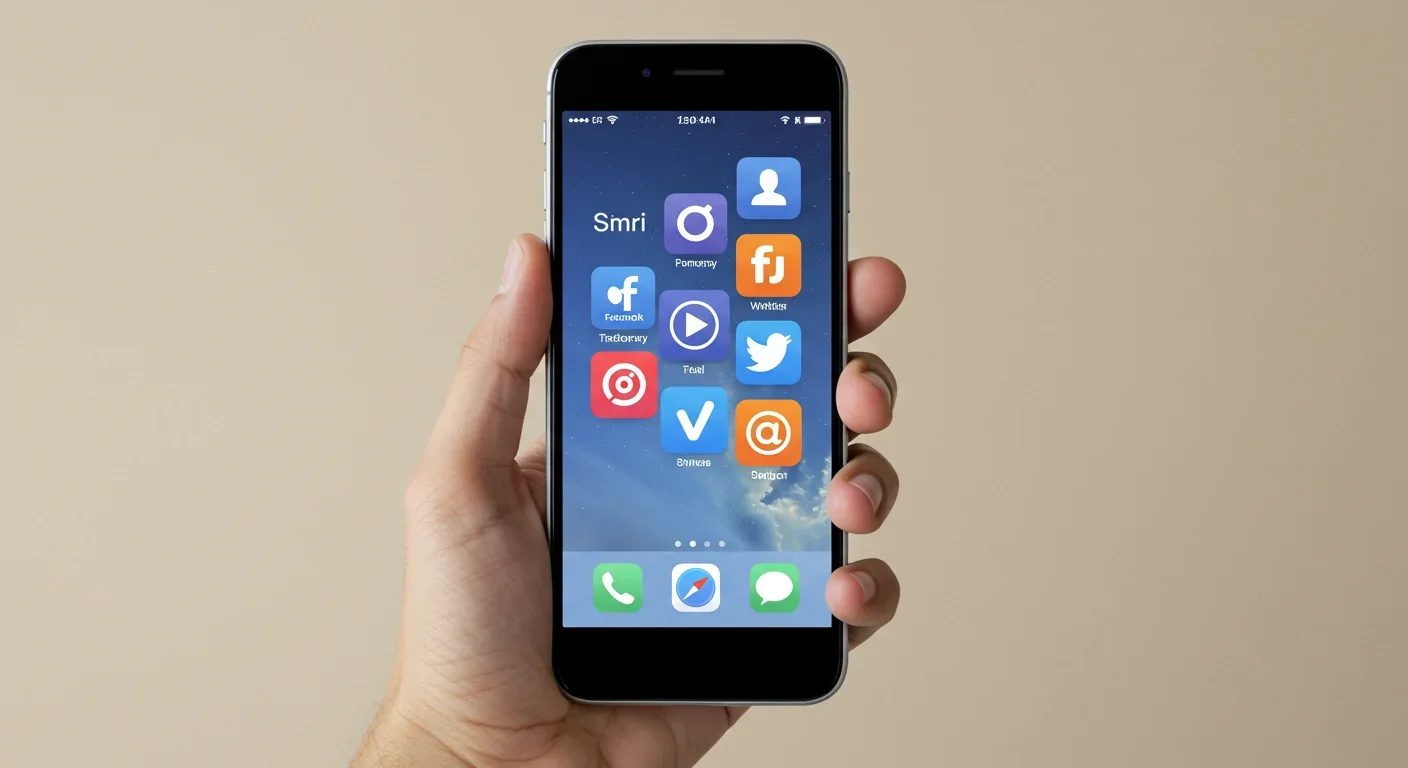
Blockchain-based social networks like Bluesky, Mastodon, and Lens Protocol are growing rapidly, offering user data ownership and censorship resistance. While they won't immediately replace Facebook or Twitter, their 51% annual growth rate and new economic models could force Big Tech to fundamentally change how social media works.